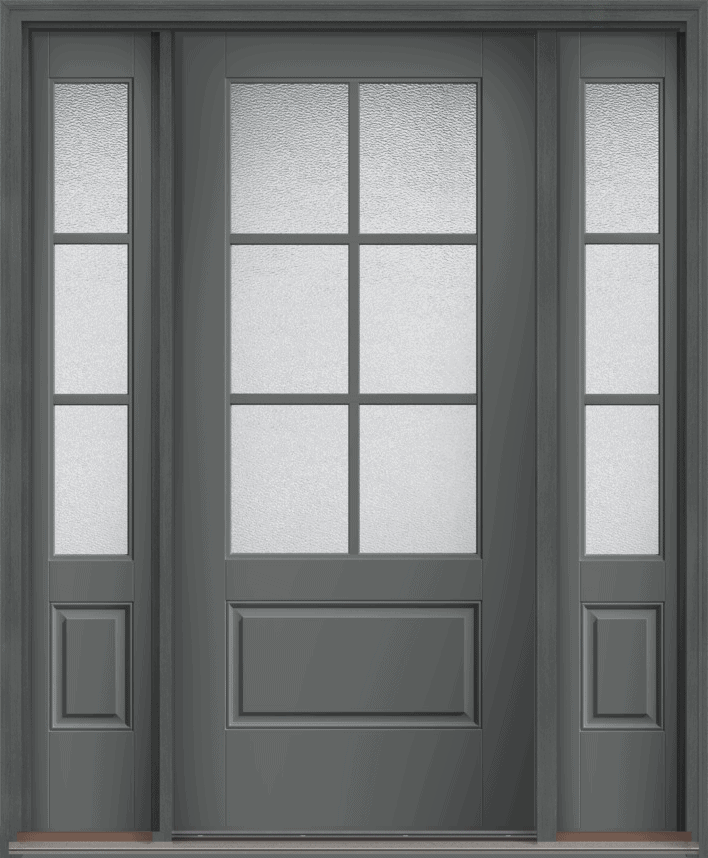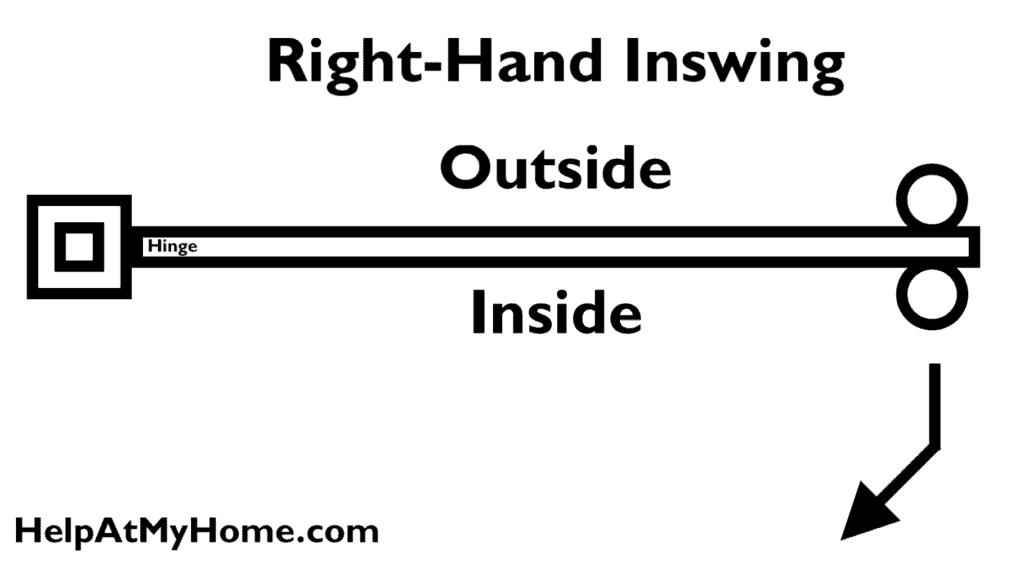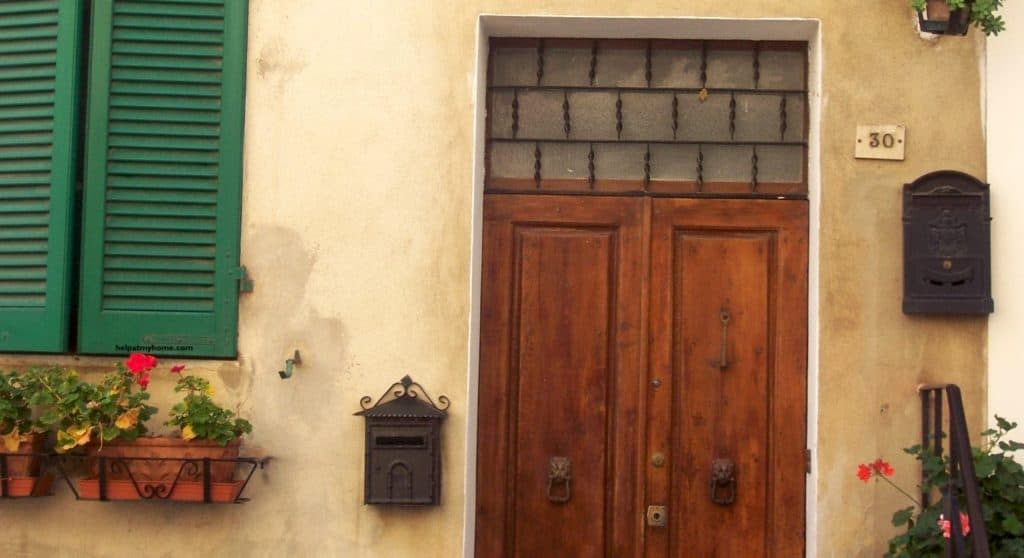Replacing a front door, often called an “entry way” door by people who sell doors, is a major pain. Even if you are working with a contractor who will do the actual work, choosing the right door is no simple task.
Here are a some tips for making sure you make this large (and often expensive) job as smooth as possible. Simply put, this is the beginner’s guide I wish I had when I replaced my home’s front door.
Buying a front door has incredible number of variables — at least 50 — so making sure you get them all correct is a headache. Using this article should get you most of the way to buying the right thing.
New Front Door Basic Information
A front door is a type of exterior door, specifically known as an entry door.
Material
Front doors can be made of different materials, primarily:
- wood
- metal
- fiberglass
Wood doors tend to be restricted to the most high-end of options. And today, in 2024, most people will be buying metal or fiberglass doors.
Fiberglass is affordable and highly weather-resistant, so it’s the most popular choice for front door buyers in 2024. Fiberglass doors can be smooth or wood grain, so don’t worry about it looking off or in any way weird! People will often go into their door buying journey thinking they want a fancy wood door but end up up with a much more practical fiberglass one instead.
Hardware
Entry doors are sold without hardware, so you will need to get your own lock and doorknob. This could be an article on its own, so we won’t get too into the weeds except to note that your hardware can be tubular (standard for American doors) or mortise, which is found generally on high-end homes and is more popular in Europe. Mortise knobs and locks are a single component, which looks nice, but it much harder to install than tubular. The main measurement with tubular locks is your backset, where 2-3/8″ is the most common size.
Hinges are a form of hardware, but they will commonly be included with your door purchase. With an included hinge you won’t have to worry about the size or radius of the hinge. The hinge’s finish should match that of the hardware, so make sure you buy accordingly!
Door Options
Front doors are sold in a frame, so when replacing it the whole frame is pulled out of the wall and replaced. This way the door swings open and closed perfectly, even if your house is old and all your walls aren’t perfectly true.
Front doors sometimes have windows on the side, these are known as sidelites. The total width of your door in its frame will be the width of the door (commonly 36 inches) plus the width of the frame around the door plus the width of the sidelites (commonly 12 or 14 inches). This is known as a continuous construction door.
Another important decision with your door is the depth of the design, which will depends on how your house is constructed, more on this below.
And then you will have to decide if you want your door painted at the factory or if it should be delivered in a standard unpainted white. In order to get a warranty most doors will have to be painting immediately after installation and painting a door is actually a very involved task, so even though factory painting can increase the price of a door by up to 50%, it may be worth considering.

Front Door Measurements
The frame of home basically has a hole in it where the door frame goes. If your house in constructed it can be difficult to figure this out since your existing door likely has some sort of trim around it. Even so, you are doing to want to find a door frame that is smaller than the available size. A smaller doorframe can go in a larger aperture, but not the opposite, so when in question, size down!
The actual door itself will be known a the “slab” when you are ordering it. This will generally be 36″ x 80″ and it turns out that picking this will be the easiest part of the whole job!
The jamb depth is another critical measurement that you don’t want to mess up. This measures the thickness of the door’s frame and it has to match the thickness of your house’s frame. If your house is built on 2x4s then you likely have a jamb depth of 4-9/16″. If your home is built on 2x6s then you will likely want 6-9/16″ though you should measure this.
The total size of the door and frame will be your rough opening width. It’ll be bigger than the size of the visible door assembly in your home now, but smaller then the total size of the door with the trim around it.

Front Door Handing
After the measurements, this is the most importing thing you will have to get right when ordering your front door. Note how your current door opens and then pick the correct handing to match this.
A typical front door will be a “Right-hand Inswing.” This means that if you are standing inside your home the door handle will be on the right side and you will open the door in, with the hinge on the left.
A left-hand inswing would be perfectly acceptable for a front door as well. From the inside, this would have the door’s handle on the left and the hinge on the right, with the door again swinging inward.
Door Accessories
Doors have an endless number of accessories you will want to consider. Most of them won’t interest you, but you’ll want to consider them before you buy the door. Here are some popular ones.
- Mail slot
- Kick plate
- Weather stripping (normally included)
- Storm door adapter kit
- Peep hole (known as a door viewer)
- Sill cover
- Sill pan
Glass or No?
Front doors can be sold as solid or with glass in them. If you get a solid door, there will likely be some sort of ornamentation, such as a six-panel or four-panel design. If you opt for glass your will want to decide on how much glass you want — perhaps a half-glass door with a single panel design under it. Or maybe a quarter glass with 4-panels under it. The options are endless.
Doors with glass will come in two major types: replaceable glass and built-in glass. Doors with replaceable glass are more practical but the glass will trim around it which you might not like as it’ll stick out from the door. Doors with built-in glass will be smooth on both sides but if the glass cracks the full slab must be replaced.
Glass will come with its own accessories, like a built-in shade or perhaps a muntin (the wooden grid piece) inside the glass to add some style.
For the glass of the door you should control low-emissivity glass, which will prevent heat loss but can also allow for considerable solar heat gain depending on what you your environment is like.
Doors Are Serious Business
Hopefully this crash course in front door selection will get you through your purchase process. Then all you will need will be to select a high quality contractor in your area and coordinate with them to get the door installed. They will almost always be happy to go through the door order with you to ensure you are buying just what you need.

